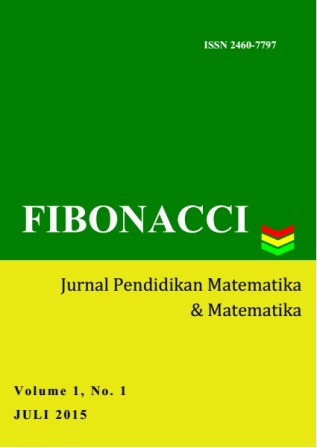PENGEMBANGAN PEMBELAJARAN MATEMATIKA KONSTRUKTIVIS BERBANTUAN E-LEARNING UNTUK MENINGKATKAN PENGUASAAN KONSEP MATEMATIKA PADA MATERI SPLDV KELAS VIII
Main Article Content
Abstract
Article Details
Authors who publish with this journal agree to the following terms:
- Authors retain copyright and grant the journal right of first publication with the work simultaneously licensed under a Creative Commons Attribution License that allows others to share the work with an acknowledgement of the work's authorship and initial publication in this journal.
- Authors are able to enter into separate, additional contractual arrangements for the non-exclusive distribution of the journal's published version of the work (e.g., post it to an institutional repository or publish it in a book), with an acknowledgement of its initial publication in this journal.
- Authors are permitted and encouraged to post their work online (e.g., in institutional repositories or on their website) prior to and during the submission process, as it can lead to productive exchanges, as well as earlier and greater citation of published work (See The Effect of Open Access).
References
Arsyad, A. (2002). Media Pembelajaran. Jakarta: Bumi Aksara.
Asman H., dkk. (2002). Educational Learning Management System (ELMaS): Model
Generik Sistem Pengurusan Pembelajaran Berasaskan-Web untuk Latihan
Perguruan. http://www2.moe.gov.my/~ipda (25 September 2010).
Bahbahani, K. (2006). “Inside Look: An Interior Portrait of Constructivist
Teachers”. The Construktivist, 17/1.
Brooks & Brooks. (1999). In search of Undestanding: the Case for Contructivist
Classrooms. Alexsandria, VA: Association for Supervision and Curriculum
Development.http://asimov.coehs.uwosh.edu/~cramer/ casestudy1/concept/
constructivist.html (diakses 27 januari 2010).
Cunningham, D. D. (2006). “The Seven Principles of Constructivist Teaching: A Case
Study”. The Constructivist, 17/1.
Darsono, M., dkk. (2001). Belajar dan Pembelajaran. Semarang: Universitas Negeri
Semarang (Unnes) Press.
Davis D. & Sorrel J. (1995). Mastery Learning in Public Schools. Valdosta: Valdosta
State University. http://teach.valdosta.edu/whuitt/files/ mastlear html (diakses 3
februari 2010).
Fuady, A. (2008). Paradigma Baru dalam Pendidikan dan Pembelajaran Leraning is
Fun. Bandung: P4TK-BMTI.
Hendrawan, C. & Yudhoatmojo, S. B. (2001). Web-Based Virtual Learning
Environment: A Research Framework and A Preliminary Assessment in Basic IT
Skills Training. MIS Quarterly. 401-426. Tersedia: GNU Free Document License
(diakses 25 September 2010).
Hidayat, M. A. (2004). Bahan Penelitian Matematika “ Teori-teori Belajar
Matematika”. Jakarta: Departemen Pendidikan Nasional.
Horslay, S. L. (1990). Elementary School Sciene for the 90’s. Virginia: Association
Supervision and curriculum Development.
Jamaludin, A. (2007). Internet Menuju Sekolah: Jardiknas. Online. Tersedia:
ade_smkams@yahoo.co.id (diakses 12 Desember 2007).
Kennedy, L.T.S. (1994). Guilding Children’s Learning of Mathematics: Wordwars
Publishing Company.
Lee, Nicoll, & Brooks. (2002). A Comparison of Inquiry and Worked Example WebBased Instruction Using Physlets. Dalam Computers & Education [Online], Vol
(5), 7 (diakses 12 Maret 2010).
Ruseffendi, E.T. (1991). Penilaian dan Hasil Belajar Siswa Khususnya dalam
Pengajaran Matematika. Bandung: Tarsito.
Sudarman. (2007). ”Problem Based Learning: Suatu Model Pembelajaran untuk
Mengembangkan dan Meningkatkan Kemampuan Memecahkan Masalah”. Jurnal
Pendidikan Inovatif. Vol 2 (2), hal: 68-73.
Sutinah, A. (2006). Pembelajaran Interaktif Berbasis Multimedia di Sekolah Dasar.
www.google.com/pembelajaran/interaktif/sutinah (diakses 12 Desember 2010).

